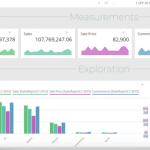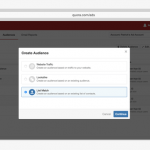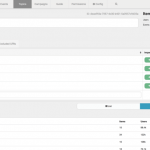Why some ad tech vets have doubts about Havas’ new transparency platform
As the transparency bandwagon gains speed, some are wondering if the added info is useful, if it takes publishers into account or if it changes anything.

While a digital ad needs to be clear to make the sale, the digital ad industry has been racking up zillions of sales in ad placements while being as clear as a muddy pond.
This week, the pond’s muddiness was confronted by major ad group Havas, which launched a platform that the company says is the first to offer full visibility into the programmatic digital ad system in real time. This comes on top of recent efforts at transparency-related solutions from Havas competitors Omnicom, WPP and Dentsu Aegis.
Called the Client Trading Solution, the Havas platform is intended to let advertisers track their exact ad spending as well as the real-time performance. To find out if this new platform matters, we pinged some ad tech veterans.
Jay Friedman, COO of programmatic media firm Goodway, doesn’t think this Havas offering will make much of a difference — and he doesn’t think the key problem is transparency.
“Whether a brand has access to the dashboard, the invoices, or any other information, there are ways agencies are getting around these things,” he told me via email. It’s not about the tech, he said, but human behavior.
In fact, he added, brands should worry less about transparency and more about “the true lift of marketing.” He essentially argues that the key thing that matters is the result:
In the absence of knowing what a product is actually delivering back to us, we shift the focus and blame on transparency. The question I’d ask a marketer is this: “If you were able to be fully guaranteed that 100% of your marketing spend and costs were transparent, would you be able to deliver better business results having accomplished that?”
Clients shouldn’t care if an agency’s margin is 70% or higher if they have something so brilliant and magical that only that agency can deliver it and achieve results that more than pay for themselves.
Of course, some brands — most visibly Procter & Gamble — have said they need a lot more insight into how their money is used. After all, how can they tell if they’re being ripped off if they can’t see inside the black box?
‘Full visibility and control’
Havas contends it is providing data on performance and return as well as the breakdowns. In a statement accompanying the announcement earlier this week, Havas Group Global Managing Director Dominique Delport said that, for the first time, “we have an offer that gives clients full visibility and control [over] costs, investments, outcomes and ROI, across trading desks, DSPs, inventory, providers, marketplaces.” Integrations include Google DoubleClick Bid Manager, Media Math and Havas’ trading desk, Affiperf.
George Levin, CEO at ad tech firm GetIntent, told me in an email that this kind of platform can solve the visibility problem, but:
… it doesn’t solve the transparency problem in programmatic. […] Having a nice dashboard and visualization is crucial for agencies. It will help advertisers to be on top of everything, make a quicker decision, understand better what’s going on with performance and compare different DSPs more consistently. But the transparency problem is much deeper and more technical. It will not help to understand whether SSPs charge hidden margin (Guardian-Rubicon lawsuit), or avoid bidding for the same inventory through several DSPs, not to mention fraud and domain spoofing.
John Potter, CTO at Business.com and LiveScience publisher Purch, has a different problem with Havas’ approach:
“Where is the transparency for the publisher?”
He added via email:
It is great the buy side is aggressively pushing to buy only quality traffic. The more we see of that the better. The buy side is better at advocating for themselves than publishers. Most of the advantages of programmatic channels have tilted to their favor and this is another example. But there should be similar transparency on the sell side so we know how much of the advertisers’ money is being taken in by the intermediaries.
The Havas platform looks at such campaign quality assessments as data management platform capabilities, ad visibility, fraud control, brand safety, trading practices and Inventory Quality Assessment. It also shows pricing negotiations between Havas and each of its vendors, the specific tech and agency fees and a comparison of vendor performance.
But it doesn’t appear to offer as much value for the suppliers of the ad space, the publishers, with similar emphases on such matters as ad quality, inventory price optimization or auction monitoring.
‘The inventory they want’
Forrester analyst Susan Bidel told me that, if Havas’ and other efforts at transparency/visibility don’t currently address publishers’ key interests, they eventually will.
The push for change is coming from the advertisers, she said, “because it’s their money.” But, in order for them to “get the inventory they want,” these solutions will need to satisfy publishers.
Another question, said Forrester analyst Jim Nail, is whether this demand for more data is leading to too much data. He noted that it remains to be seen whether the Havas and similar transparency-oriented platforms provide the intelligence to make sense of all that revealed info.
The Havas platform, which provides a “control tower” of visibility into connected demand side platforms, ad exchanges, trading desks and other parts of the ad tech ecosystem, was built for Havas by its own tech/math group, the France-based MFG Labs.
At launch, Havas said, the platform has been used for six months by its client, Spanish telecommunications firm Telefónica, S.A.
Marketing Land – Internet Marketing News, Strategies & Tips
(24)













